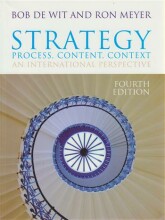Drug interactions
5 important questions on Drug interactions
What is a bidirectional interaction?
What is mechanism-based inhibition?
What is the hepatic clearance?
It is determined by:
- enzyme activity (intrinsic clearance (define by Vmax, Km))
- plasma protein binding (fraction unbound (fu= cu/ctotal)
- hepatic blood flow (normal value 1350 ml/min). (This is 25% of cardiac output)
- Higher grades + faster learning
- Never study anything twice
- 100% sure, 100% understanding
What is the extraction ratio?
What is the case if the extraction ratio is low? (< 0.3)
The hepatic clearance is determined by enzyme activity and plasma protein binding. The hepatic blood flow is not limiting (so it does not affect the clearance)
This is the case in 1) low enzyme activity, 2) high plasma protein binding.
It applies for most drugs and usually F has a low variabililty but a high value (approaching 1)
An example is diazepam (cl = 1,3=0,4 ml/kg/min = 20-30 ml.min, F = 98%)
The question on the page originate from the summary of the following study material:
- A unique study and practice tool
- Never study anything twice again
- Get the grades you hope for
- 100% sure, 100% understanding
































